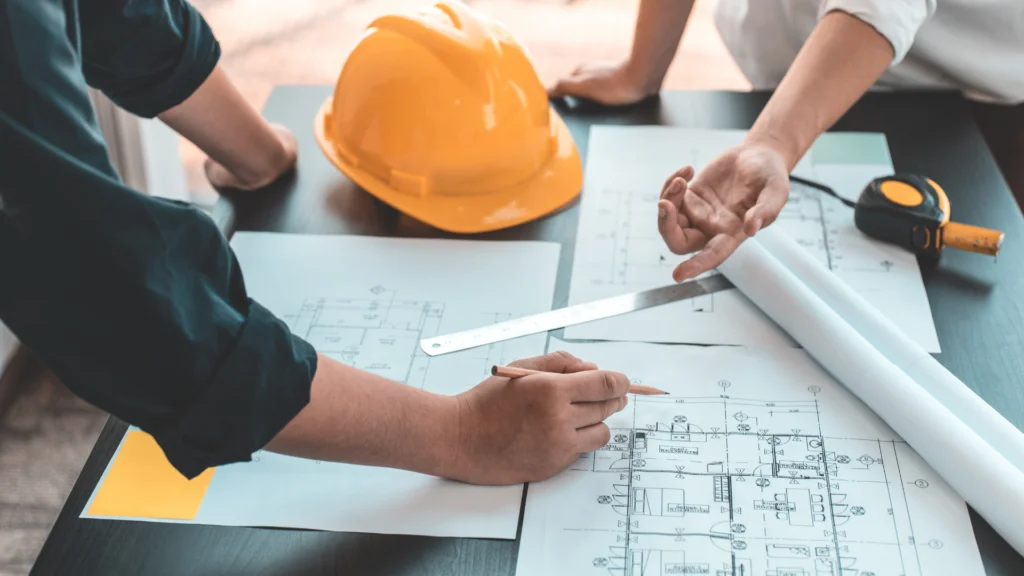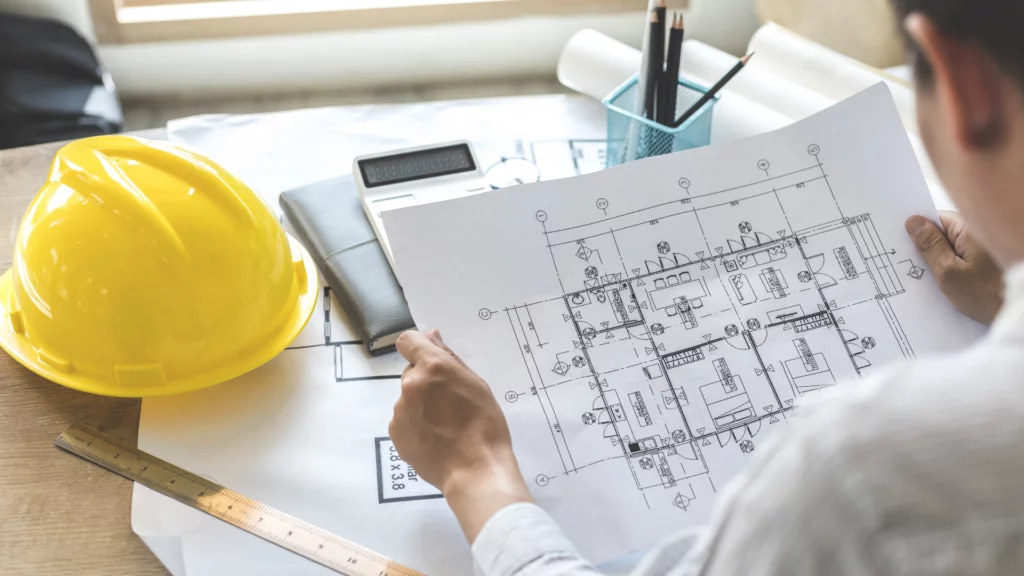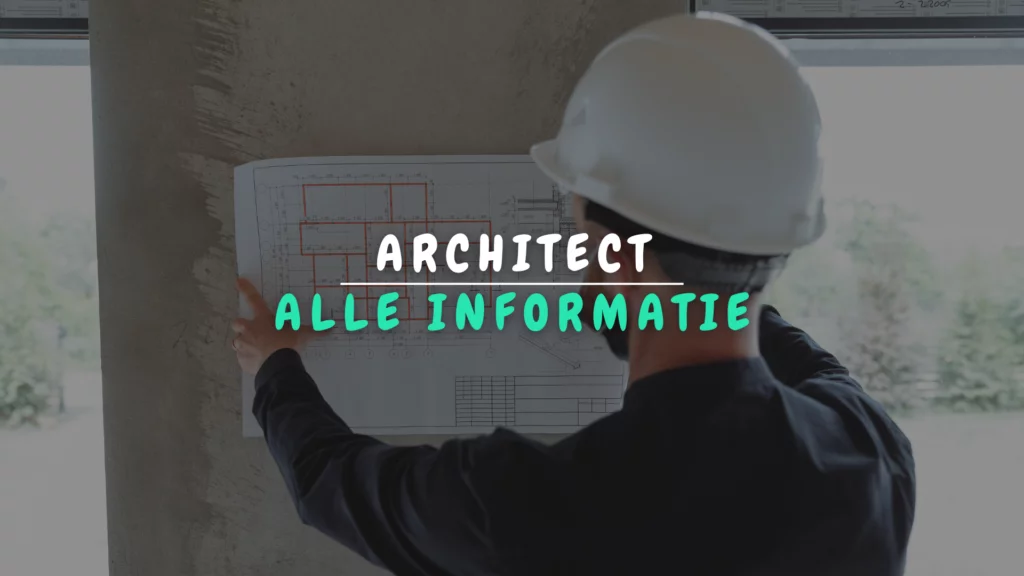An architect draws building plans and supervises works for (new) construction and renovation. How much does an architect cost? When is it mandatory? What does he/she do? How do you choose the right one? Read it here!
What does an architect do?
An architect combines creativity with technical knowledge to create functional, aesthetic and safe spaces. He/she ensures that the final building meets all technical and legal standards. He/she designs buildings and structures such as:
- hotels
- houses
- tunnels
- schools
- bridges
- dams
- factories
- warehouses
- airports
- train stations
- concert halls
- malls
- hospitals
- apartments
- office buildings
- …
You agree the range of tasks with him/her in advance, so that he/she knows what to do and so that you don’t pay for things you don’t need. He/she performs tasks such as:
- Client consultation: discussing your needs and budgets.
- Create conceptual design: create sketches that meet your vision, desires and requirements.
- Create technical design: create detailed, correct dimensional drawings that engineers and contractors can work with.
- Arranging building permits: getting permits and approvals in order.
- advice on contractors: helps you choose your contractor
- Coordinate fellow professionals: collaborate with engineers, contractors, builders, etc.
- manage construction: monitor construction progress and be the point of contact for problems and changes during construction.
- Manage budget: follow up on expenses.
- coordinating with the client: communicating with you to make sure the build meets your needs and expectations.
What is the cost of an architect?
The short answer to the question: There are no set rates for an architect’s fee. The long answer to the question:
- An initial consultation is usually without obligation, but for specific services such as design sketches, they often charge a fee.
- Discuss in advance what you expect from him/her. The more tasks in his/her remit, the more expensive your project will be.
- Record all agreements in a written agreement.
- He/she should clearly define what services he/she provides and what he/she charges for them.
- The costing method (of the fee) depends from architect to architect:
- a percentage of construction costs
- a lump sum (e.g., based on square footage)
- an hourly fee
- a combination of the above.
- You pay VAT on it at 21%, including for renovation work.
- You usually pay the costs (the fee) incrementally as the work progresses and according to terms stated in the agreement. An example of the division:
- 15% at conceptual design
- 30% on construction application
- 20% at start of works
- 25% at progress of works (staggered by phase: structural work, techniques and finishing)
- 10% on completion
- You pay separately for additional services such as EPB reporting or safety coordination.
The cost of an architect depends on such things as:
- the requirements of the project.
- the size/size of the project.
- his/her duties.
- his/her costing method.
- His/her work situation: self-employed or an architectural firm.
- the complexity of the project: new construction or renovation, degree of workmanship, uniqueness.
When is hiring an architect mandatory?
Under Belgian law, it is mandatory to hire an architect for any construction or renovation for which you need an environmental permit. In this list from Codex Flanders you will find a list of exceptions. In case it is not mandatory, it still pays to hire one anyway:
- He/she looks at your project in the longer term. E.g.. Energy Targets
- He/she gives you correct and objective advice. E.g. About materials and technical interventions

How do I choose the right architect?
Step 1: Determine your goals and desires
- Is it a residential property, commercial building, renovation or something else?
- What are the functional requirements? How will you use the spaces?
- Housing: The number of bedrooms, kitchen layout, …
- Office: The number of workstations, meeting space, space for IT infrastructure, …
- Store: The layout of the sales space and storage area, accessibility to your customers and staff, …
- Factory: The number of production areas and workstations, the layout of storage space for raw materials and finished products, logistics routes and loading capabilities, …
- …
- What look do you want?
- Style: Modern, classic, traditional, futuristic, rural, …
- Material: Brick, concrete, glass, wood, stone, metal, …
- Color and texture
- Proportions: Proportions of windows, doors, facades,(garage) gates, …
- Landscape: garden, terrace, balcony, …
- …
- What is your budget?
- Are you entitled to premiums or subsidies?
- In what time period do you want to build or remodel?
- Deadlines: Are there any deadlines you need to consider? E.g., for permits and authorizations
- …
- Do restrictions apply?
- Local building codes
- Zoning requirements
- Environmental considerations: Sustainability and maintainability.
- …
- Are there other individuals or organizations that help decide?
- …
Step 2: Do research
- Ask for recommendations from friends, relatives or colleagues.
- Search online via Google and check out related websites such as architect.be.
- Find inspiration in (online) magazines, through blogs and Pinterest.
- Browse the online portfolio and discover the architects’ style and credentials.
- Check licenses and certifications.
Step 3: Compare different architects
- Discuss your requirements and wishes.
- Exchange ideas.
- Ask for more references within your chosen architectural style.
- Discuss your budget and cost model.
- Get a concrete quote.
Notice:
- An initial consultation is not always free. So be sure to read all the terms and conditions carefully.
Step 4: Choose the right architect
Does it click with your architect? Then you’re in the right place! The collaboration with your architect is for a long term and it should go smoothly. Accept the offer and get to work together.

Sources: Architect, Homedeal, Immoweb, Zimmo
Would you like to cite this article as a source? Then use:
Stiasteny, L. (2024, April 19). Everything you need to know about architects. Apartment.be. Accessed on (date XX/XX/202X), from https://www.appartement.be/alles-wat-je-moet-weten-over-architecten






